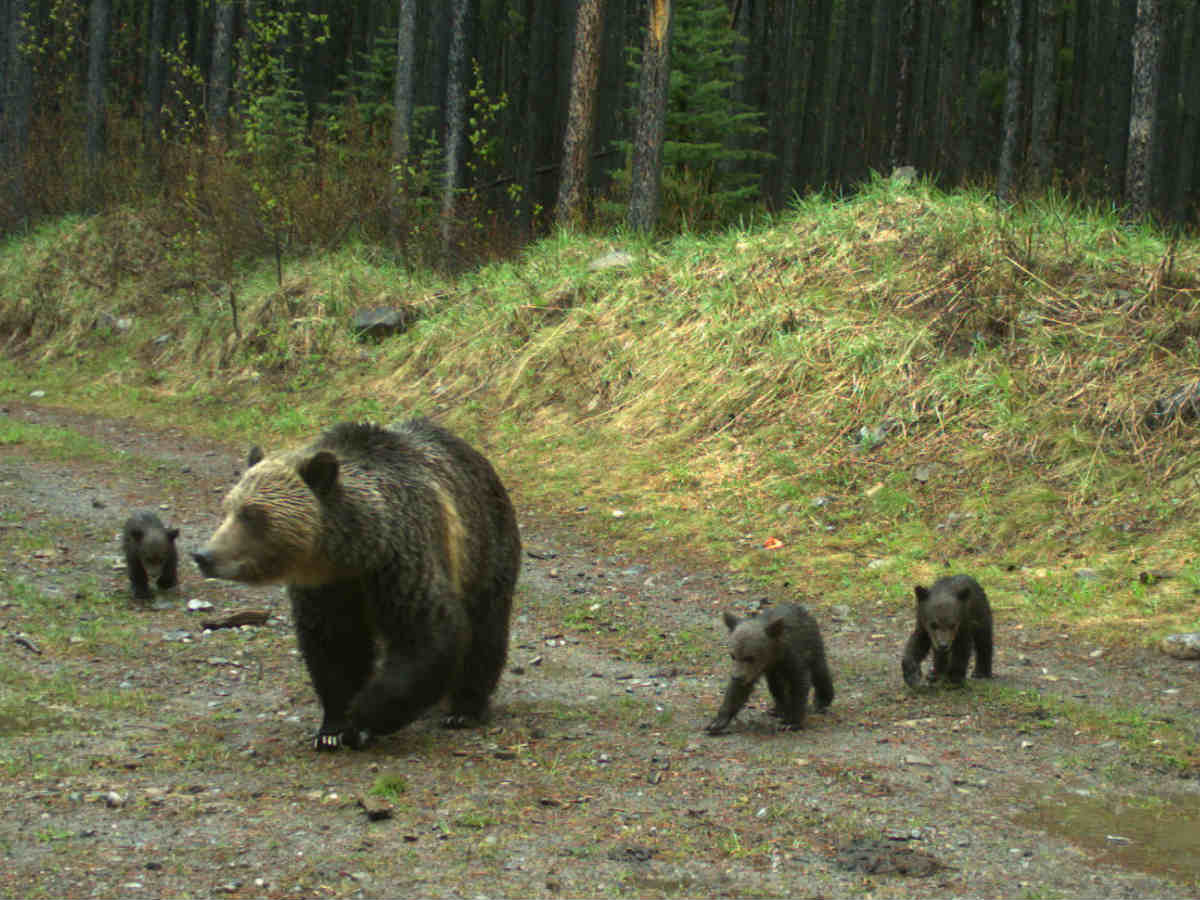
A trail camera captures a mother bear and cubs near a human trail. A new study examines how bear behaviour is influenced by the presence of recreation trails like this one. Photo credit: Andrew Ladle
Grizzly bears respond to human recreational activity by changing where they spend their time and how they get around, according to a new study by University of Alberta biologists.
Building on research published earlier this year on bear avoidance of motorized recreation, this study used GPS data from individual grizzly bears to track where and how bears move through the environment in response to different types of recreation on trails in their habitats. The researchers examined both male and female grizzly bears, as well as females with cubs.
"Grizzly bears respond to recreational activity both in terms of habitat selection and by changing their movement behaviour," explained Mark Boyce, professor in the Department of Biological Sciences and co-author. "These responses vary based on the type and magnitude of recreation, as well as the sex and reproductive status of the individual bear."
Males and solitary female bears avoid trails used for motorized recreation, like ATVs and dirt bikes, and tend to move faster when near these trails. Female bears with cubs showed the largest response to motorized recreation, moving as quickly as possible when in close proximity of trails with motorized recreation.
"Conversely, all classes of bears were more likely to use trails with non-motorized activity, like hiking," added Andrew Ladle, recent PhD graduate and lead author on the study, who conducted this research with Boyce.
Worth bearing in mind
These results highlight the challenges faced by wildlife managers and conservationists, due to the nuanced ways that each male, female, and female with cubs responds to different activities.
"It's interesting to show that wildlife alter multiple behaviours simultaneously in response to disturbance," said Boyce. "We believe our study shows that motorized recreation results in avoidance and changes in movement of bears, which could potentially affect their ability to forage on and around such trails. We emphasize however that further studies looking at foraging behaviour are required."
The paper, "Grizzly bear response to spatio-temporal variability in human recreational activity," was published in the Journal of Applied Ecology (doi: 10.1111/1365-2664.13277).